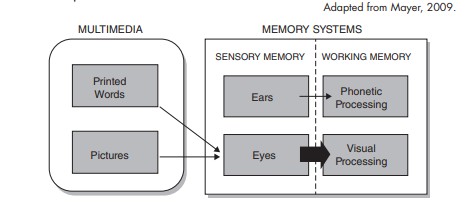Worked Examples: Do they work?
Worked Examples: Do They Work?
What you are about to read is a blog post about a topic called "Worked Examples" defined by Clark and Mayer in their text "e-learning and the Science of Instruction."
A worked example as defined by Clark and Mayer in their text "e-learning and the Science of Instruction" on page 242, is a step by step demonstration of how to perform a task or solve a problem."
I have taken this concept and created a resource for Music Educators on how to teach students to begin improvising on their instruments. At the bottom of this page you will find a link to the project itself. I begin the video by saying that my intended audience is not students! This is for music educators in the field who have a strong music theory background. On page 244 of the Clark and Mayer, the Data shown explains the fact that students that had worked examples in practice pairs completed the given task much faster!
In a two studies completed by Hattie (2009) and Renkl (2014) have proven that when "Worked examples have been not only provided but enhanced to really help students; their effect size ranged from .57 to 1. Basically almost guaranteed to double! pg. 245 Clark and Mayer.
As you can see when students are provided with worked examples that are customized to help, the sky is the limit!
Some challenges that I faced while making this video was that Screencastify does not record the embedded audio from noteflight.com. What that means is you have to download a wav file and put the whole video together with whatever musical excerpts you need into additional video editing software.
On a positive note I did learn how to use a new resource that was provided to me in a graduate course that I am taking which is "PlayPosit" which gave me the ability to embed questions in my worked example so viewers can't speed through it without showing some kind of understanding for the material that was included! My worked example also included multiple choice and short answer questions to force the viewers to show understanding of the step by step process that was being provided to them. (pg 249) The video also uses the Contiguity Principle by keeping related content together. (pg. 96)
In conclusion, my Worked Example demonstrates multiple multimedia principles through referencing the Contiguity, Modality, Redundancy, Multimedia, and Coherence Principles. The worked example included narrated audio text/musical notation to explain the information that was being presented. (Modality and Redunancy Principles) The worked example also sticks to the Coherence Principle by not providing distracting audio/video for the viewer. pg. 155, pg. 168.
Below is a link to my video presentation on a resource designed to help music educators introduce beginning instrumentalists to improvisation.
An introductory resource for Music Educators on Jazz Improvisation. - "PlayPosit" Link (With guided Questions)
An introductory resource for Music Educators on Jazz Improvisation - Youtube link (No Guided Questions)


Comments
Post a Comment